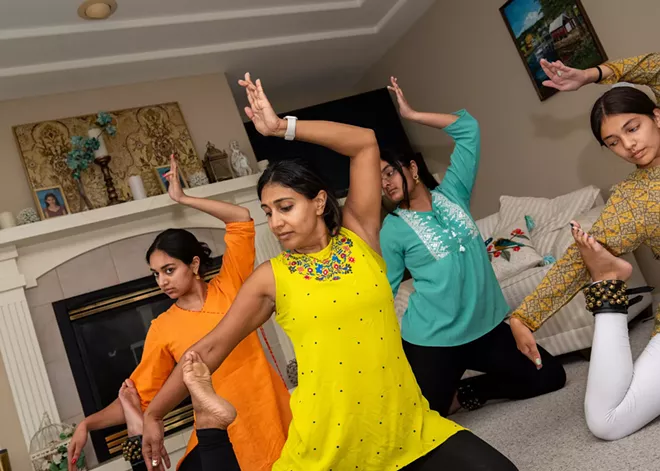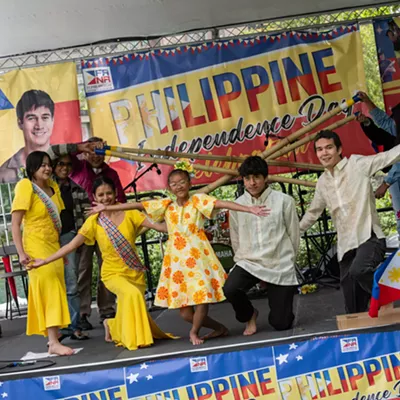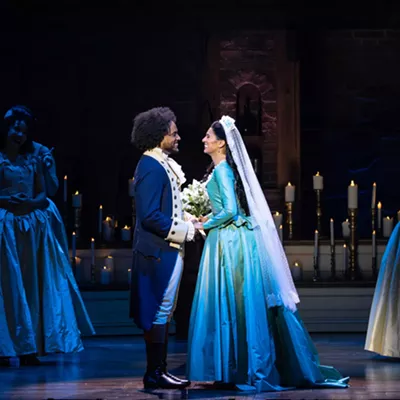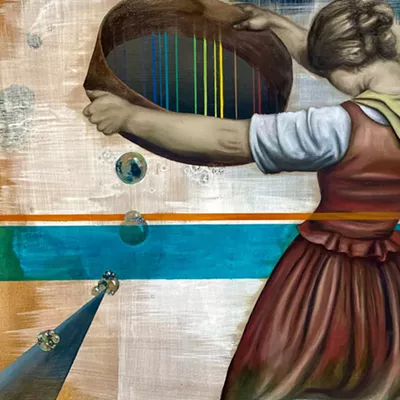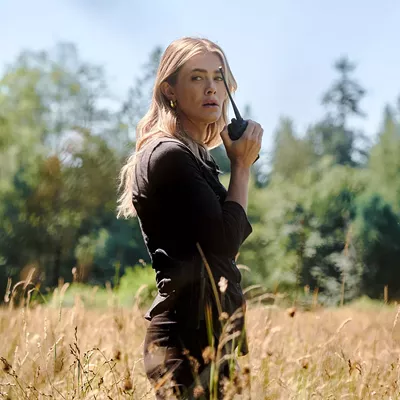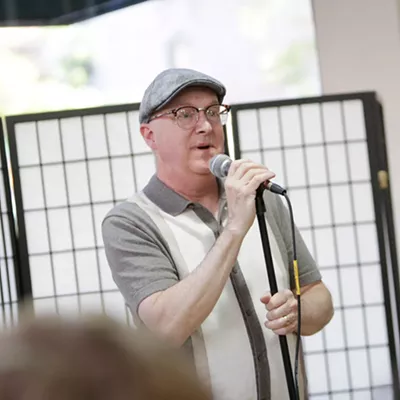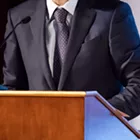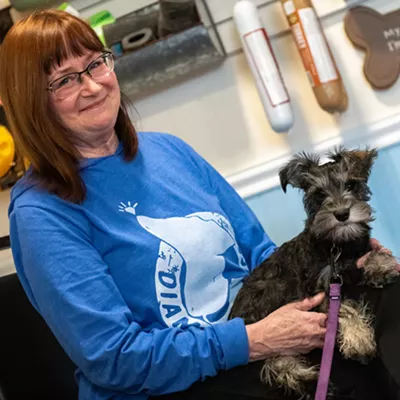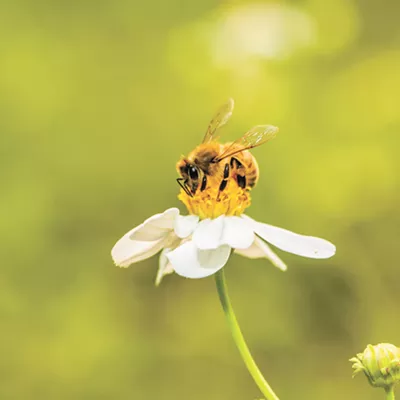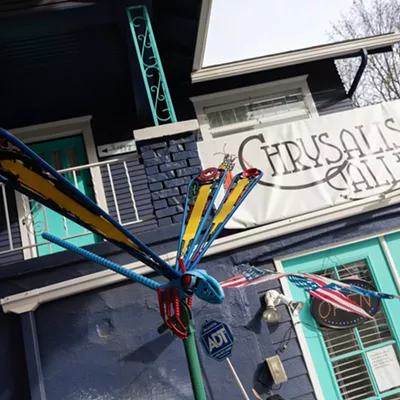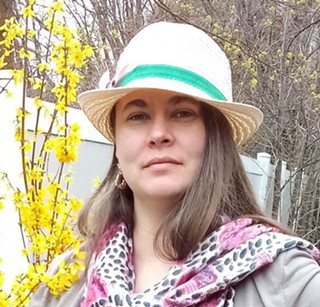During the academic school year, Devika Gates can often be found in a classroom at Spokane Falls Community College teaching chemistry. When school's not in session, however, she trades the chem lab for a dance studio or local library to share not science, but the rich culture of her Indian heritage.
"I think the best part of teaching is that I know everyone I teach is going to go on to pursue something new. They're going to be able to take this knowledge and do something with it," Gates says.
While Gates, who holds a Ph.D. in chemistry, finds science interesting and fun to teach, she also loves sharing her Indian heritage and culture whether it's dancing, yoga, or art forms like rangoli and henna painting.
"Growing up in America has been amazing, I feel so lucky. But I never fully feel like I belong here, and I never fully feel like I belong in India," Gates says. "Being able to share my culture gives me a sense of belonging. Having other people share their culture makes me feel like they understand how I feel."
Gates opened her Natanam Dance School in Spokane Valley in 2018. She offers Bollywood dance classes that fuse traditional Indian dance with modern dance forms like hip-hop and jazz. This energetic dance style gives students more than a workout.
"Have fun, shake your hips. Really, you're gaining confidence," Gates says.
Bollywood dancing attracts a diverse group of students, ranging from children as young as 5 to adults in their 60s. It's an easy class for beginners, and Gates says there's no right or wrong in the style.
Gates started teaching Bollywood to help cover her studio's rent so she could also teach bharatanatyam, an ancient form of South Indian dance. It was originally performed by women in temples, and was often used to express Hindu religious stories and devotions. The dancers' graceful movements contain theatrical elements in poses, facial expressions and hand gestures.
The performance and teaching of bharatanatyam across India was banned in 1910 while the country was under British rule. But when India regained independence in 1947, the classical dance returned to temples and public stages. Still, Gates wonders how much knowledge was lost during nearly four decades of prohibition.
"Bharatanatyam is very rigorous, hard and complex. You're either doing it right or you're doing it wrong," Gates explains. "It's really a dance that you pass on, and I feel like I need to pass it down to the next generation."
Gates' bharatanatyam classes attract dancers with Indian heritage, mainly because the dance is not well-known.
"Bharatanatyam is an incredibly aerobic activity, and you have to be in good health," she says, noting that many movements require the dancer to be in an upright, squat-like pose.
And unlike Bollywood dance, bharatanatyam can take as long as a decade to truly master.
"But it's so worth it at the end of it to be able to do something that people were dancing to thousands and thousands of years ago," Gates says.
Performing bharatanatyam without knowing yoga, however, is impossible.
"They are intertwined. You can't really do one without the other because [in] the dancing [there are] yoga poses," Gates says.
For that reason, she also teaches authentic Indian yoga, a style passed down through generations like bharatanatyam. Gates herself started yoga around age 7 while also learning the dance.
Yoga — a word meaning "yoke" or "union" — began thousands of years ago in India. Beyond exercise, it offers mental and spiritual awareness.
"It allows you to find yourself in whatever way you are," Gates says. "You want to be peaceful. If thoughts come in, you're letting them in [and] out, you're not beating yourself up. It's about being your best self. And it's about finding some type of spiritual awareness about who you are and how you affect the energy around you. Yoga is an acceptance of everybody where they're at, and where you're at."
"Authentic Indian yoga differs [from Western yoga]. You're really focusing on spirituality and the aspects of yoga," she continues. "So when you did yoga [in ancient India] you were also engaged in the performing arts, or you were trying to get into a pose that was somewhat uncomfortable to be more in touch with your spirituality, whatever that might be."
Gates starts and ends each of her yoga classes with meditation. "I think that's really important to remember that we're all connected in some way."
Like yoga, creating rangoli can also produce a meditative state.
Rangoli is a bright, decorative Indian folk art used to celebrate happy occasions. It features "a lot of vibrant colors because it means happiness, prosperity, wealth, and knowledge," Gates says.
Holidays during which rangoli is made include birthdays, weddings, important religious events (like the Hindu celebration of the birth of Krishna), and annual holidays like Indian Independence Day on Aug. 15, commemorating when the country was freed of British rule.
Rangoli is a mesmerizing display in the form of religious symbols, floral designs or geometric patterns. These patterns have a variety of meanings, like bringing good fortune, and each color represents something, like green for the sea. Also often pictured are elements of nature, like mangoes and other fruits, and animals, like peacocks.
The designs are made using a variety of materials such as colored sand, flower petals, chalk powder or spices. A few simple tools are utilized, but it's mostly made with one's hands or spoons. Due to its transitory nature and placement on the ground, rangoli can be easily ruined.
"It's the worst when someone steps on it. So, I'm gonna step on it first," Gates says with a laugh.
Like yoga and bharatanatyam, Gates has also practiced rangoli from a young age, learning it from her family.
Indian Culture with Devika Gates
Sun, July 28: Rangoli from 1-2 pm, authentic Indian yoga from 2:30-3:30 pm
Sun, Aug. 11: Henna painting from 1-2 pm, authentic Indian yoga from 2:30-3:30 pm
Both sessions are free at Shadle Library, 2111 W. Wellesley Ave., details at spokanelibrary.org
"When we would visit India, everyone lived in an extended family. People would be doing different designs," she recalls. "I was watching them and doing my own [smaller version]."
Another traditional Indian art form is mehndi, the adornment of henna ink on the hands and arms for happy occasions. As a child, Gates learned how to apply henna from seasoned mehndi artists. She perfected her techniques during the COVID shutdown. When public gathering restrictions were lifted, she felt confident enough to offer mehndi at vendor booths during fundraisers for her dance school.
To create even more opportunities for locals to learn about and participate in Indian culture beyond those events and at her studio, Gates often hosts free Indian yoga and Bollywood dance classes at local libraries. This summer, she's already taught several such classes, such as Indian kite making, Kundan jewelry and henna art.
"I hope this encourages other people to teach us about their culture," she says. "A lot of times minorities [are] trying to teach other people, but I hope that I can learn about cultures that were here and not [from] here." ♦

